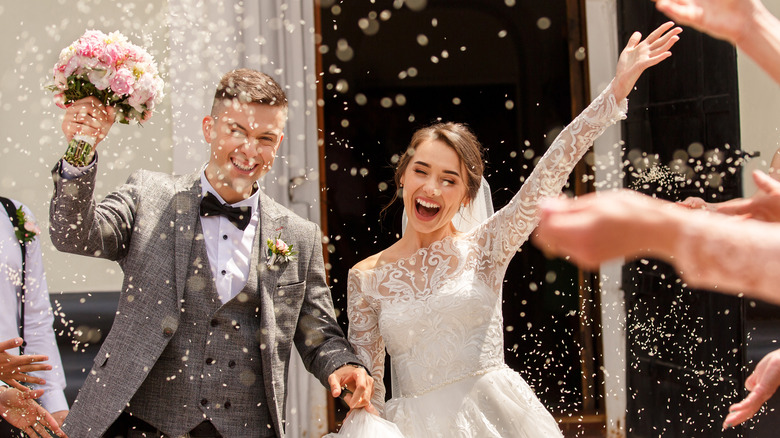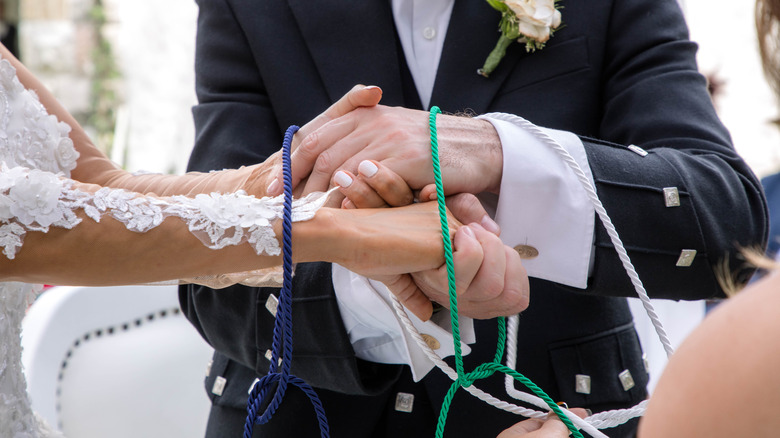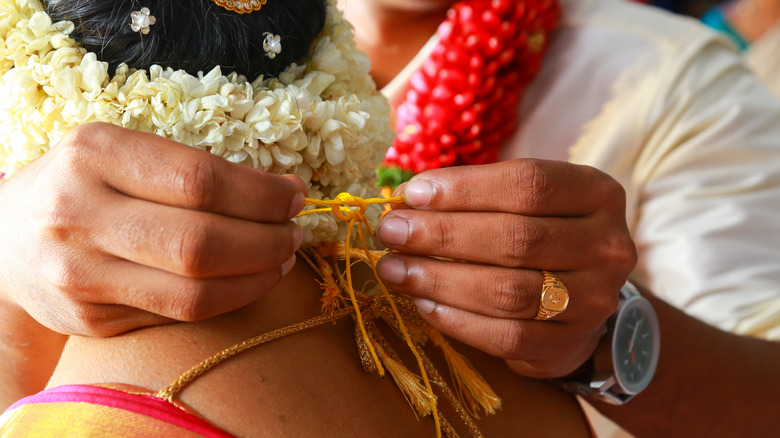Why Do We Say People 'Tie The Knot' When They Get Married?
Marriage has changed a lot over the last 100 or so years, and, arguably, that's a good thing. Same-sex unions, interracial couples, and marriages later in life have all become much more commonplace than in decades past. Still, nuptials tend to be rooted in tradition. From the clothing worn to the food eaten, nearly every culture has its own rules and norms for a happy couple's big day.
Even the language used to discuss getting married can be highly traditional. For example, the phrase "saying your I do's" is related to the wedding vows recited at many religious weddings, according to WeddingWire. Meanwhile, Marie Claire explains that the idiom "getting hitched" is a reference to how horses were traditionally attached to wagons (similar to the romantic attachment created during marriage).
Similarly, the phrase "tie the knot" is directly inspired by a tradition that is said to be thousands of years old.
'Tying the knot' began in Celtic wedding traditions
Many may have assumed that the saying "tie the knot" means to become bound together by marriage — similar to how two strings can be knotted together. But this is only partially true. There's a much richer cultural practice behind this common phrase.
According to Brides, "tying the knot" refers to a Celtic wedding practice that dates back to 7000 B.C. and is called handfasting. The Culture Trip notes that handfasting may have historically only symbolized a couple's intent to marry, similar to an engagement today, to test their marriage compatibility before officially conjoining. These days though, handfasting usually takes place on the day of the wedding or in vow renewal ceremonies.
A video demonstration by Jane Bechtel, a wedding celebrant from Humanist Society Scotland, shows that there are a variety of ways to perform Celtic handfasting. However, they all involve making knots with fabric or cords to represent unity.
Knots symbolize love in cultures around the world
"Tying the knot" may be a phrase most directly associated with handfasting in the Celtic culture, but other cultures have their own interpretations of romantic knot-tying. In China, making knots out of red strings and ropes is embedded in Chinese folk art (via ChinaTravel.com). Knotted motifs are commonly placed in bridal rooms and wedding venues for good luck. Knots are also incorporated in wedding gowns and suits in the form of knotted buttons and accessories.
In China's neighboring country of Japan, knots are also commonly associated with fortune and protection. As Make Magazine explains, knots adorning gifts are a sign of "affection, warmth, and togetherness." Similar to handfasting, Indian weddings also have their own knot-tying ritual. Traditionally, the groom ties a necklace with three knots around the neck of the bride to symbolize their union (per WeddingWire).
Though marriage has evolved over time, some traditions — and the words we use to describe them — remain the same.


